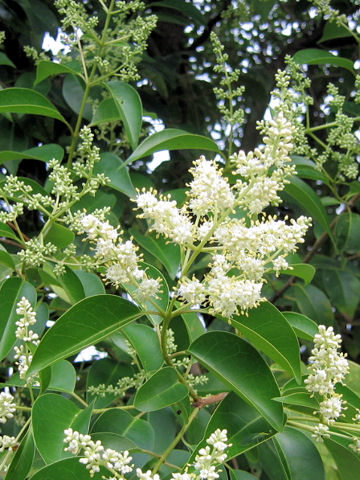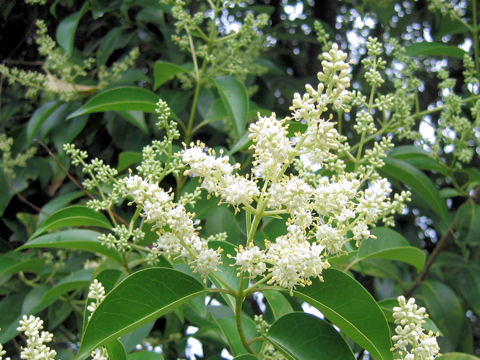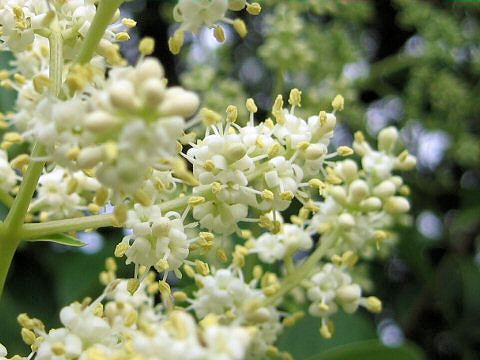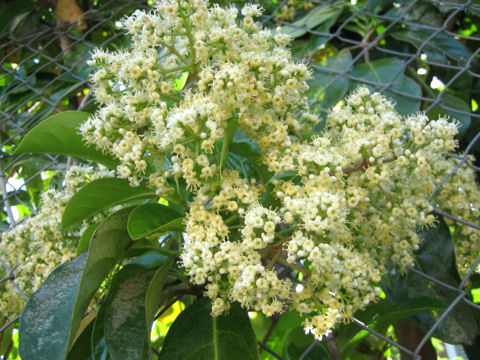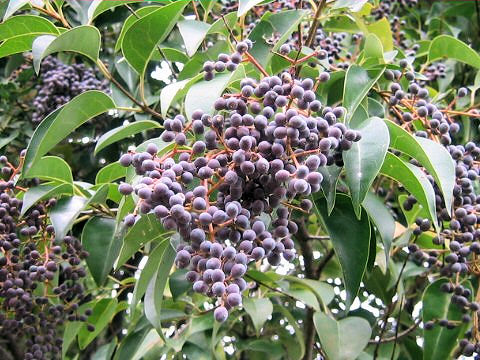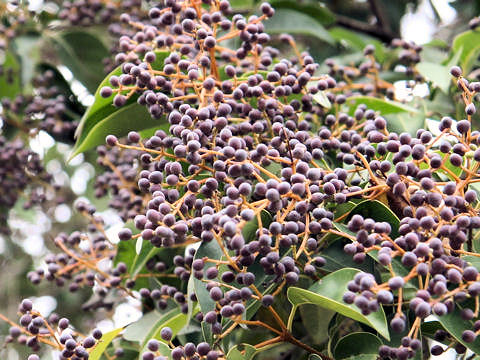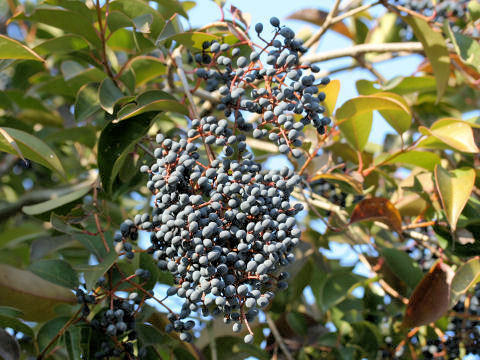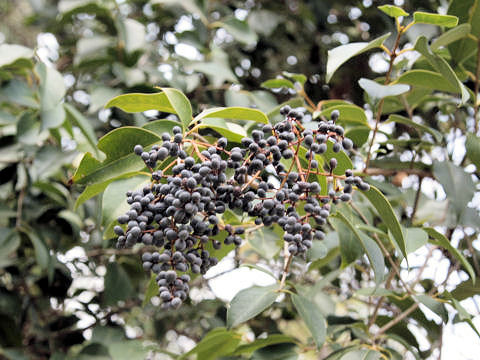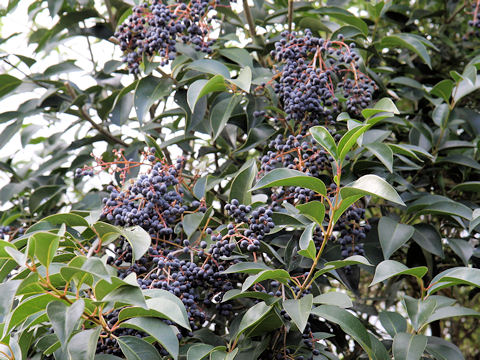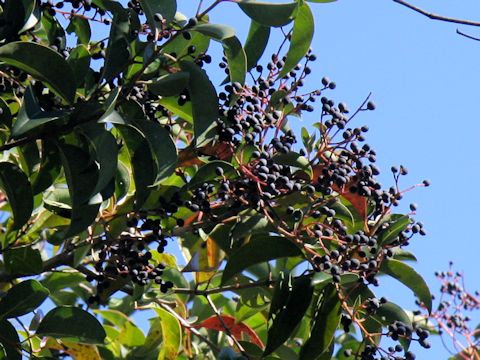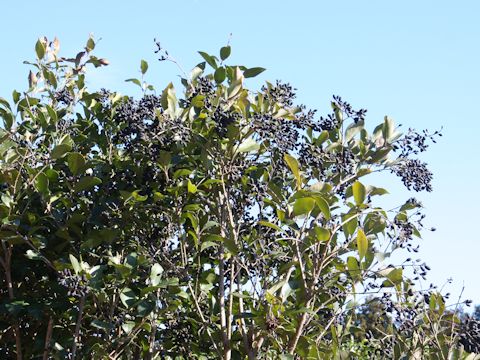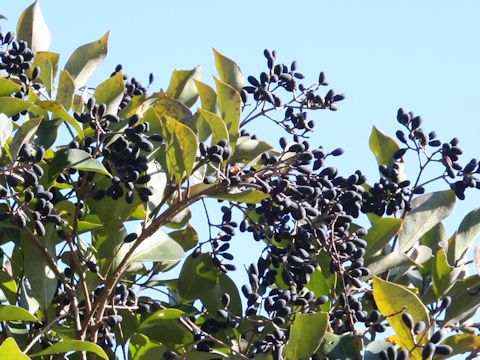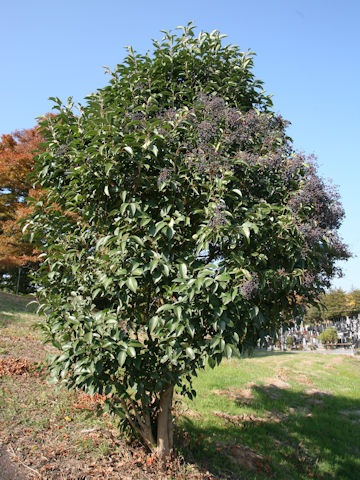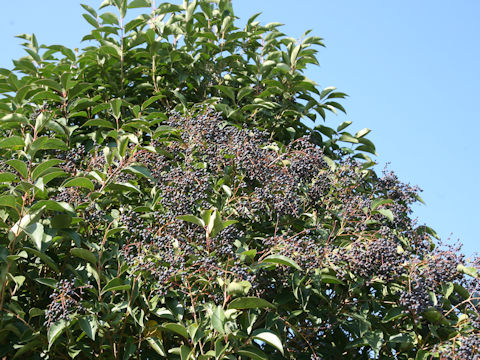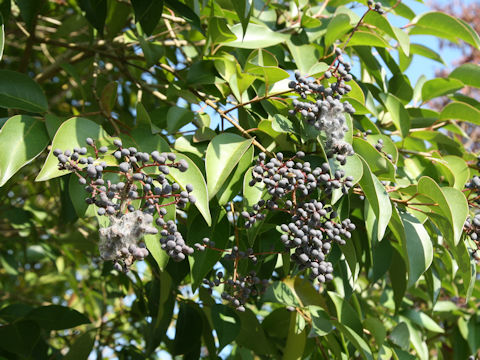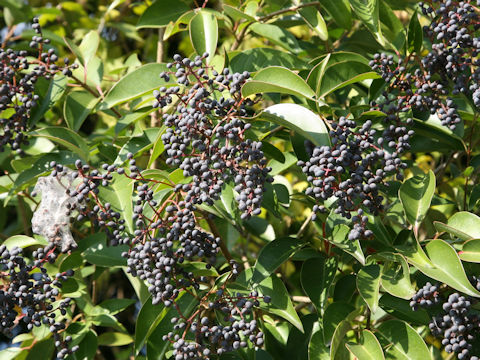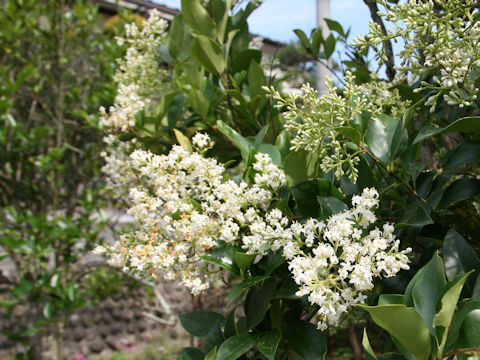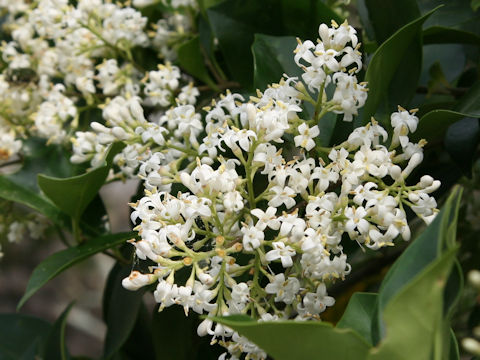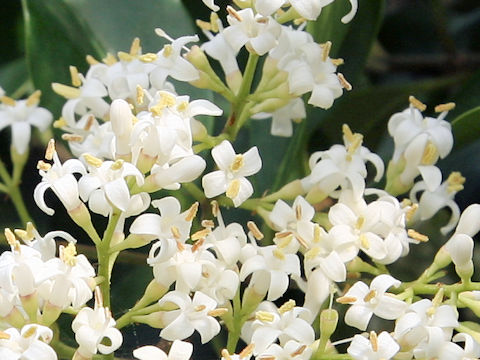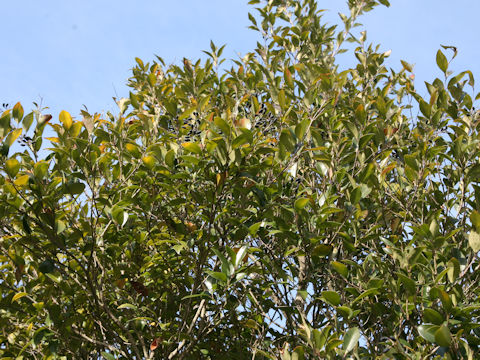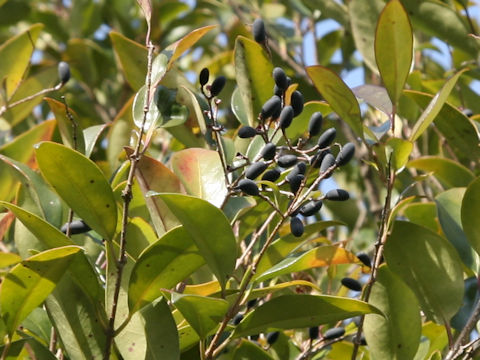
|
|
|
|
-- もっと見る(Show more)--
|
|
|
|
中国が原産です。わが国へは明治時代の初めに渡来しました。葉は卵形で対生し、葉脈が透けて見えるのが特徴です。6月から7月ごろ枝先の円錐花序に、芳香のある小さな白い花をいっぱいに咲かせます。果実は楕円形で黒紫色に熟します。中国ではこの果実を「女貞子(じょていし)」と呼び、強心や利尿、緩下、強壮薬として古くから用いられてきました。中国語では「女貞(nu zhen)」と呼ばれます。 |
|
|
モクセイ科イボタノキ属の常緑高木で、学名は Ligustrum lucidum。英名は Glossy privet、Chinese privet。 |
|
|
The Glossy privet (Ligustrum lucidum) belongs to Oleaceae (the Olive family). It is a tall evergreen tree that is native to China. This tree was introduced into Japan in the early Meiji Era (about 140 years ago). The leaves are ovate, opposite and defined by transparent veins. The panicles are borne on the terminal branches and bloom scented small white flowers from June to July. The fruits are elliptic and ripen in bluckish-purple. In China, this fruit is called "女貞子" (nu zhen zi) and has long been used as a cardiotonic, diuretic, laxative, and tonic. In Chinese, it is called "女貞" (nu zhen). |
|
|
[上・中1~2] 大阪府四條畷市清滝中町にて、2004年06月23日撮影。 [中4] 同上にて、2004年12月05日撮影。 [中5] 同上にて、2006年11月23日撮影。 [中3] スペイン・バレンシア県プソルにて、2010年05月24日撮影。(photo by Yumi Gunji) [中6] 京都府宇治市「宇治市植物公園」にて、2006年01月12日撮影。 [中7] アメリカ・テキサス州ダラス市にて、2006年03月04日撮影。(photo by Jon Suehiro) [中8] 大阪府枚方市招提元町にて、2007年12月19日撮影。 [中9] 群馬県高崎市「高崎市染料植物園」にて、2011年12月11日撮影。 [中10・中11] 茨城県つくば市「つくば実験植物園」にて、2013年01月19日撮影。 [中12~中15] 宮城県多賀城市「多賀城跡」にて、2022年11月11日撮影。 [中16~中18] 宮城県大河原町大谷にて、2023年06月06日撮影。 [中19・下] 福島市飯坂町湯野にて、2024年01月11日撮影。 |

|
|
Shu Suehiro |
